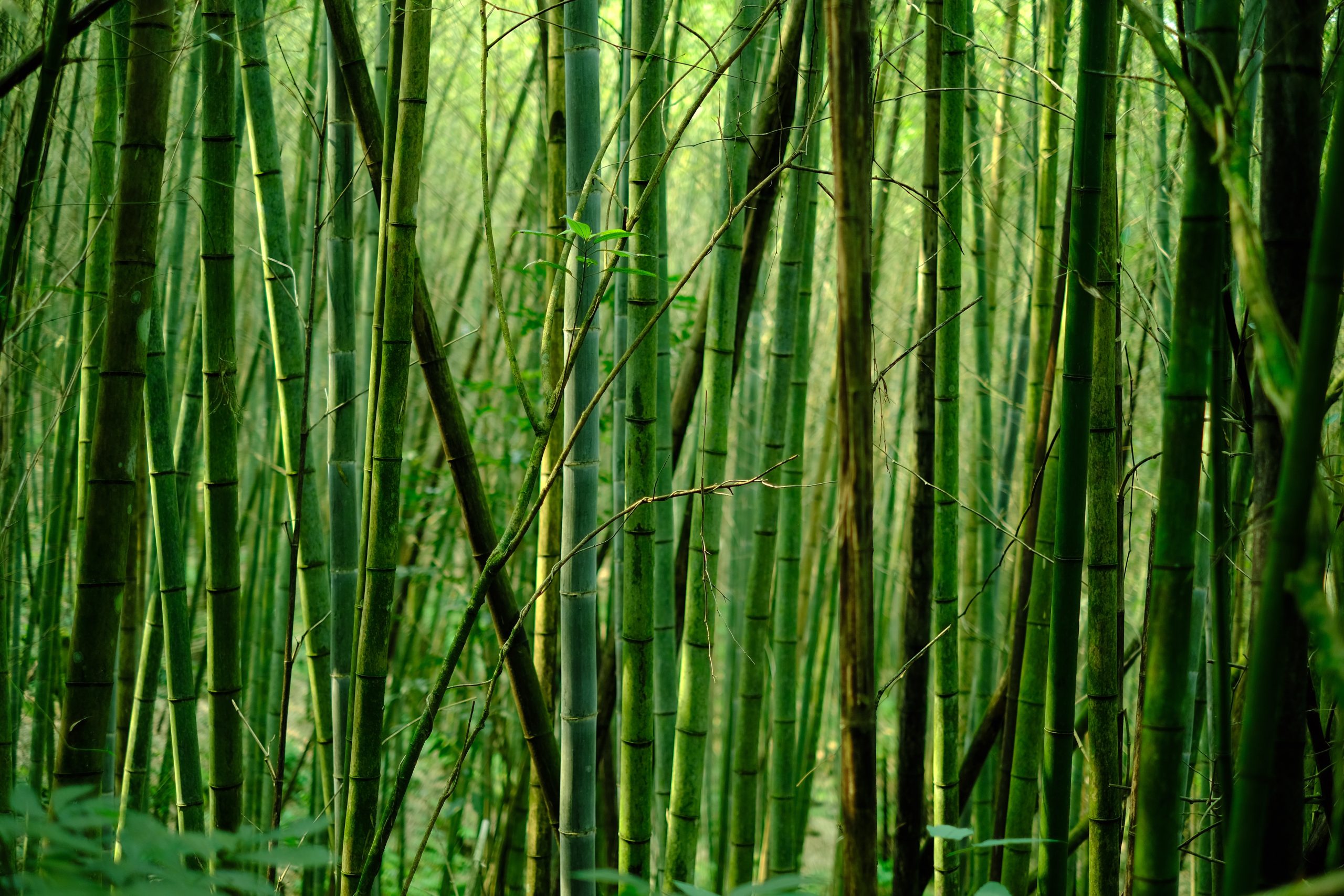Exploring the Delights of Bamboo Asian Cuisine: A review
In the heart of Asia’s vibrant food scene lies a culinary tradition that’s both ancient and ever-evolving – bamboo Asian cuisine. This unique gastronomic journey will lead you through the lush bamboo forests and bustling kitchens of Asia, where bamboo is not just a plant but an integral part of their culinary heritage.
Join in with Green Sun Travel as we explore the flavors, stories, and sustainable practices that make bamboo Asian cuisine a true delight for the senses.
Bamboo Asian Cuisine
Bamboo, with its sturdy and flexible nature, has long held a revered place in Asian cultures, where it’s utilized for everything from construction to artistry. However, one of its most exciting roles is as a versatile and essential ingredient in Asian cuisine.
- Bamboo Shoots: These tender, cone-shaped treasures are a staple ingredient in many Asian dishes. Known for their crisp texture and earthy flavor, bamboo shoots add a delightful crunch to stir-fries, soups, and curries. They’re harvested young, ensuring their tender and palatable quality.
- Bamboo Leaves: Bamboo leaves are not just used for shade; they play a vital role in Asian cuisine. These large, green leaves are often used to wrap and steam rice dishes, infusing the grains with a subtle but distinct fragrance. The leaves also help to maintain moisture and impart a unique flavor profile to the cooked rice.
- Bamboo Steamers: Bamboo steamers are indispensable tools in Asian kitchens. These intricately crafted containers allow for gentle and even cooking, preserving the natural flavors of ingredients. From dumplings and buns to fish and vegetables, bamboo steamers are culinary workhorses that have stood the test of time.
Destination Spotlight: Thailand
Our first destination spotlight takes us to Thailand, where bamboo cuisine is deeply intertwined with the country’s culinary heritage. In Thailand, bamboo shoots are used in countless dishes, adding a delightful crunch to stir-fries and curries. However, it doesn’t stop there; bamboo’s influence extends to more creative culinary horizons.
- Bamboo Rice: A culinary wonder awaits in Thailand’s bamboo forests. Here, bamboo tubes are used to cook rice, infusing the grains with a unique aroma and subtle flavor. This bamboo rice is a testament to the nation’s creativity in utilizing its natural resources for culinary delight.
- Eco-Conscious Approach: Thailand’s use of bamboo in cooking isn’t just about flavors; it’s a reflection of the country’s eco-conscious approach. Sustainable harvesting practices ensure that bamboo forests thrive, promoting environmental responsibility while preserving culinary traditions.
The Bamboo Asian Cuisine Menu

Now that we’ve explored the role of bamboo in Asian cuisine, let’s tantalize your taste buds with a glimpse of the menu. Picture yourself savoring bamboo shoot stir-fry, where the tender shoots are sautéed with aromatic spices and savory sauces. Or perhaps you’re intrigued by bamboo leaf-wrapped sticky rice, a sweet treat with a subtle hint of bamboo’s earthy notes. And don’t miss the bamboo-steamed dumplings, where the bamboo’s natural flavors infuse the delicate fillings.
- Bamboo Shoot Stir-Fry: The crisp and slightly nutty bamboo shoots are the stars of this dish. They are often stir-fried with a medley of vegetables, garlic, ginger, and soy sauce, creating a harmonious blend of textures and flavors.
- Bamboo Leaf-Wrapped Sticky Rice: This dessert is as visually appealing as it is delicious. Sticky rice, sweetened with coconut milk and sugar, is encased in bamboo leaves and then steamed. The result is a delightful marriage of textures and flavors, with the leaves imparting a subtle earthy essence.
- Bamboo-Steamed Dumplings: These delicate parcels of joy are a must-try. Filled with a variety of ingredients such as pork, shrimp, or vegetables, the dumplings are gently steamed in bamboo baskets. The bamboo’s natural aroma enhances the flavors of the fillings, making each bite a delightful experience.
Culinary Adventures
During our culinary adventures in Thailand, we had the pleasure of indulging in bamboo-infused dishes that left a lasting impression. One standout memory was our visit to a local family-run restaurant tucked away in a bamboo grove. There, we enjoyed a bamboo shoot curry bursting with flavors that can only be found in the heart of Thailand. The subtle crunch of the bamboo shoots combined with the rich, fragrant curry sauce made for a truly memorable meal.
Where to Find Bamboo Asian Cuisine at Home
If you’re inspired to recreate the magic of bamboo Asian cuisine in your own kitchen, fear not. Many Asian groceries offer bamboo shoots, leaves, and even bamboo steamers. Stock up on these essentials and embark on a culinary journey in your own home.
Don’t forget to seek out recipes and cooking tips from local experts to perfect your bamboo-inspired dishes. With a little creativity and the right ingredients, you can transport yourself to the heart of Asia through your taste buds.
Cultural Insights

The use of bamboo in Asian cuisine goes beyond mere sustenance. It’s deeply rooted in cultural traditions and beliefs. In some cultures, bamboo symbolizes resilience and flexibility, qualities that are reflected in the dishes it graces. The practice of using bamboo in cooking also showcases the resourcefulness and sustainability of Asian culinary traditions, which have stood the test of time. As you savor bamboo-inspired dishes, remember that you’re not just enjoying a meal but also immersing yourself in the rich tapestry of Asian culture.
Sustainable Bamboo Practices
As we celebrate the deliciousness of bamboo Asian cuisine, it’s crucial to recognize the importance of sustainability in bamboo harvesting. Sustainable practices ensure the preservation of bamboo forests and the continuity of this culinary tradition. Many regions have embraced responsible harvesting methods and eco-friendly initiatives to protect this valuable resource. By supporting sustainable bamboo practices, we not only preserve the environment but also contribute to the longevity of bamboo cuisine, ensuring that future generations can continue to enjoy its flavors and cultural significance.
Conclusion
From the bamboo-rich landscapes of Thailand to the kitchen tables of Asian homes, bamboo’s role in Asian cuisine is a testament to the creativity and resourcefulness of the cultures that cherish it. It’s more than just a culinary tradition; it’s a connection to nature, to history, and to the very essence of Asian identity.
As you embark on your own epicurean adventures, may you carry with you the flavors and traditions of this extraordinary culinary world. Whether you’re savoring bamboo dishes in their place of origin or experimenting in your own kitchen, remember that bamboo cuisine is more than a meal; it’s a taste of Asia’s rich heritage. It’s a reminder that food is not just sustenance; it’s a cultural expression, a story, and a bridge that connects us to the world.
In each bite of bamboo shoot stir-fry, in the aroma of bamboo leaf-wrapped sticky rice, and in the delicate flavors of bamboo-steamed dumplings, you taste the love and craftsmanship that have been passed down through generations.
In doing so, you become a part of the ongoing story of bamboo Asian cuisine. You contribute to the preservation of traditions, the sustainability of resources, and the appreciation of the rich tapestry of Asian culture. So, go forth, explore, and savor the magic of bamboo Asian cuisine—a journey that transcends borders, connects us to our roots, and leaves a lasting imprint on our palates and our hearts.







